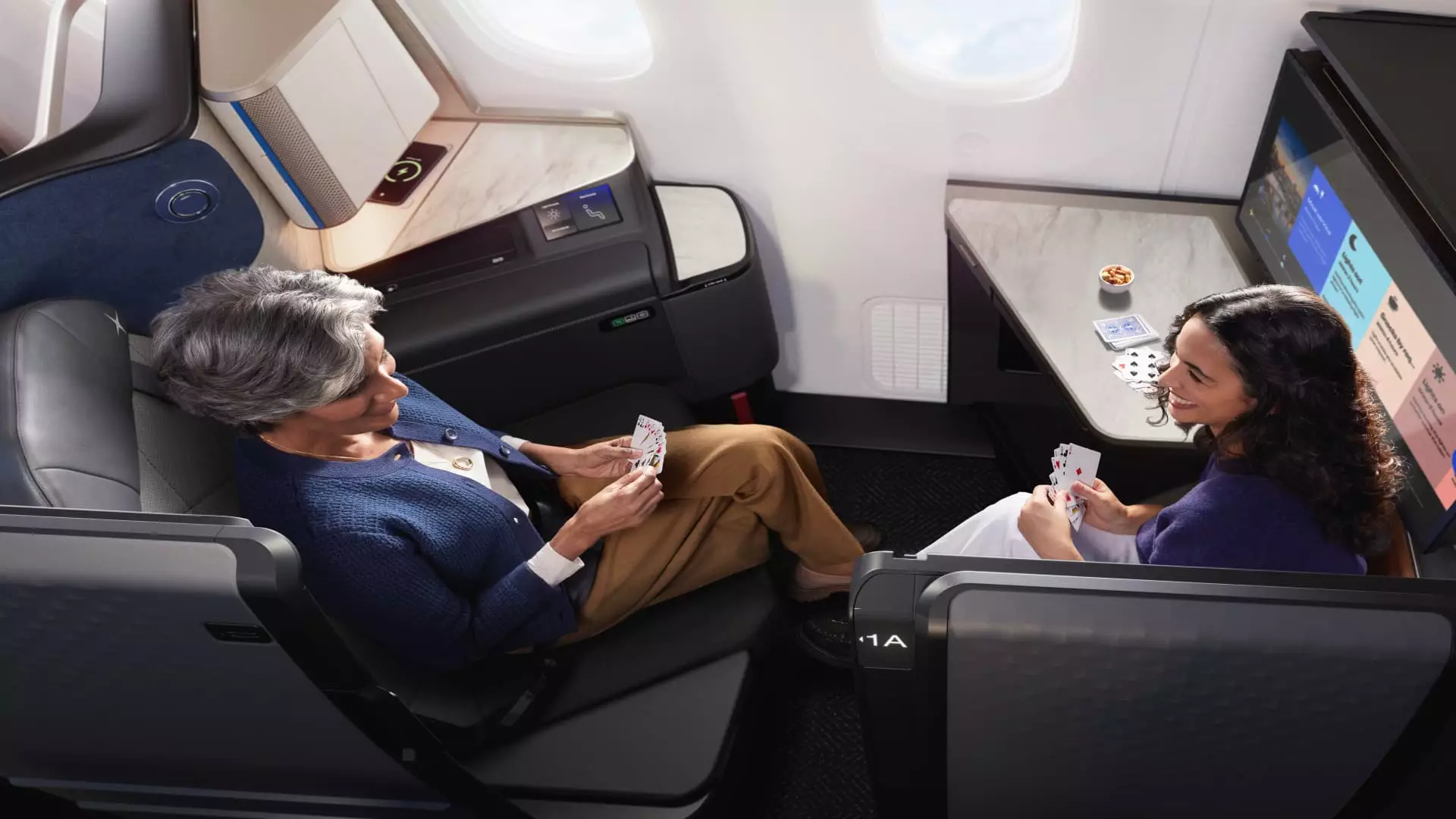In an era where airlines appear to be in an unabashed race for superiority in the business-class sector, the stakes have never been higher. U.S. airlines such as American Airlines and United Airlines have transformed the luxury flying experience into a fierce competition replete with flamboyant upgrades, extravagant features, and capital-intensive investments. But amid this highly polished veneer lies an unsettling reality: Are these premium offerings—complete with sliding doors and lavish amenities—genuinely enhancing our travel experiences, or are they merely a smoke screen for an industry grappling with thin margins and declining consumer satisfaction?
Not long ago, American Airlines unveiled its latest “suites,” boasting higher living space and modern touchpoints, while United Airlines is responding with equally ambitious plans for its Polaris business class. Noteworthy is the recent trend towards a layering system of seats, evidencing an inclination toward more exclusivity at the expense of transparency. The surreal pricing structures require scrutiny, particularly in light of what might be called a “premium deception,” where pricing is so steep that only a select group can afford such luxuries.
The Economics of Indulgence
On the surface, the rising demand for premium seats appears to suggest that travelers are willing to pay for extravagance. Yet, this perspective glosses over a crucial dilemma: what about the declining experience for economy passengers? The exorbitant rates that luxury travelers pay for their experiences raise significant questions about fairness and economic equality in air travel. Why should business-class passengers indulge in extravagance at the cost of an overall positive travel experience?
The statistics back this up. A whopping price differential for a simple flight from Philadelphia to London—where business class can cost over $5,700 compared to the $867 standard economy fare—simply demonstrates that those who can afford such luxury define the future landscape of air travel. With airlines battling for market share in this niche, the average traveler continues to experience increasingly squeezed conditions in economy class.
Luxury vs. Practicality: Where Do We Draw the Line?
The new business-class seat models, such as American Airlines’ “Preferred” suites and United’s cloud-breaking Polaris Studio, challenge the very notion of airline travel. While they boast features like wireless charging pads and expansive personal space, one must wonder: how many of these features effectively transcend into real value for the traveler? If we step back from the allure of design and aesthetic, do these upgrades actually translate to a better flying experience, or do they serve merely as an upscale distraction from operational inadequacies?
Despite all these lavish offerings, the reality is that they exist in stark contrast to the treatment of the everyday traveler in economy. Many business-class features do not compensate for the numerous delays and issues that plague air travel. Contemporary air travel has devolved into an environment where time is not just money; it’s a frustratingly uneven experience plagued by inefficiencies.
Is the Emperor Really Wearing Clothes?
Airline executives wax poetic about the resiliency of premium travel demand, largely ignoring the broader economic climate that has left many consumers grasping for more cost-effective options. “Wealthier people tend to do OK even in a recession,” an executive asserts confidently, highlighting the disconnection between those pushing for premium offerings and the realities faced by most travelers. Such statements fail to resonate with the average American family who may prioritize budgeting over luxurious travel experiences.
This grand spectacle of providing premium services raises ethical concerns about whether the positive narratives from airline executives align with customer experiences on the ground. Many individuals stuck in drab, overcrowded economy sections find no solace in hearing of improved pampering for those soaring in luxury. As airlines tout their upgrades, the voices of economy passengers are often drowned out.
Are We Buying Into the Hype?
Amidst this frenzy over business class, it’s time we question whether this extravagance is endemic of a deeper issue within air travel inefficiencies. The unprecedented focus on luxurious trappings, from gourmet meals to custom toiletries, obscures critical operational foundations that remain compromised. The temptation is to view these multi-layered marketing strategies as a cure-all for years of neglect in customer service.
As the competition grows fiercer, it becomes inevitable that airlines might overlook one vital truth: the experience transcends mere amenities. A well-padded, luxurious suite doesn’t guarantee a timely arrival or a courteous staff. Perhaps it’s time airlines reconsider their priorities—focusing not only on opulence but also on restoring a semblance of reliability and consistency for all travelers, regardless of class. As we plunge deeper into this corporate arms race, the question looms larger: at what point does luxury become a distraction from genuine improvement in the travel experience? In this high-stakes game of business-class superiority, there seems to be far more at stake than just comfort and caviar.

